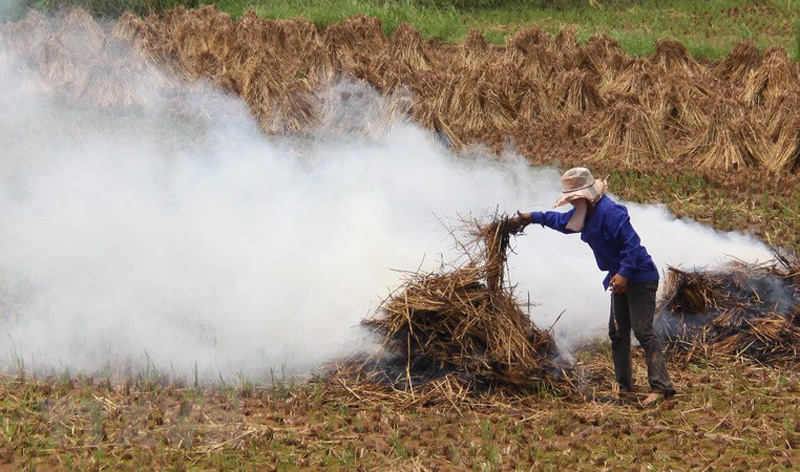According to the agriculture ministry, rice waste accounts for up to 50 percent of dry matter. For every ton of paddy, the amount of byproducts from rice is equivalent to 1 ton, or 10 -12 tons of by-product, per hectare.

A ton of maize yields 1.2 tons of by-products of maize stalks. One hectare of peanuts will discharge 11 tons of stalks and 1 hectare of cassava will release 7 tons of tops and leaves. With the current cultivated area, the estimated amount of by-products across the country is over 50 million tons a year.
Research shows that crop by-products have high nutritional value (45-70 percent of total digestive nutrients) and can provide a large amount of calories (1662 - 2549kcal per kilogram of dry matter). If appropriate technology is applied, crop by-products can become valuable products for livestock, soil and environmental protection.
| Research shows that crop by-products have high nutritional value (45-70 percent of total digestive nutrients) and can provide a large amount of calories (1662 - 2549kcal per kilogram of dry matter). If appropriate technology is applied, crop by-products can become valuable products for livestock, soil and environmental protection. |
However, only over 10 percent of crop by-products are used as firing on the spot (at kilns, for cooling), 5 percentas industrial material, and 3 percent as animal feed. This means that 80 percent is thrown away. It is either discharged to the environment or burnt, which causes pollution and obstruction.
According to Pham Xuan Hung, director of Phuong Nam Agriculture Development, the majority of farmers don’t use crop waste for firing, but burn the crop in the fields.
One hectare of rice field discharges 6 tons of straw, which can produce 3.5-4 tons of organic fertilizer. Vietnam now has 4 million hectares of rice, and 80 percent of straw is burnt, which means that VND40 trillion is burnt each year.
“Vietnam is wasting a rich source of money. The burning even causes pollution to the environment,” Hung said.
Coal, biofuel, power, aerogel and battery can be made from rice husks. Agricultural byproducts can be used to make building materials, organic fertilizer, cultivate mushroom anf lingzhi, and produce handicrafts.
In recent years, domestic microorganic preparations that can treat straw such as Compost Maker and Trichoderma have been used in fields and gained satisfactory results.
However, according to Hung, farmers still prefer burning straw in the fields.
Phuong Nam has created a preparation, Sumitri, which can fix the problems. The product has been experimented with at the HCMC Hi-tech Agriculture Park. It not only can help save on fertilizer, but also restrict the growth of weeds and prevent some diseases.
Thanh Lich

More money poured into waste-to-electricity plants in Vietnam
The domestic waste treatment market, worth VND7.3-9.8 trillion, continues to attract new investments and technologies.

Quang Ngai tells investor to complete waste treatment plant by late September
The People’s Committee of central Quang Ngai Province has instructed North Investment and Development Construction JSC to complete construction of the plant and put it into operation before Sep 30.
 Vietnam produces 50 tons of crop by-products yearly, but most of it is burned and not used as another resource.
Vietnam produces 50 tons of crop by-products yearly, but most of it is burned and not used as another resource.